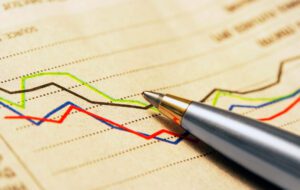
Oxford Economics has downgraded the forecast for Ukraine’s GDP growth in 2021 to 4% from 4.4% in the July forecast, and the risks of further lockdowns and expectations of tightening fiscal and monetary policy led to a deterioration in the forecast for economic growth in 2022 from 4.2% to 3.5%.
The disappointing Q2 data prompted us to cut our 2021 GDP growth forecast to 4% from 4.4% last month. And with Ukraine’s vaccination rate being one of the lowest in Europe, the COVID-19 infection rate may rise sharply again, according to the forecast of Oxford Economics for August.
According to the analysts, due to the lack of vaccines and hesitation regarding vaccination, the proportion of fully vaccinated is kept at less than 7% of the population. These factors pose significant downside risks to short-term growth forecasts.
Oxford Economics expects inflation to average 9.2% this year, with further declines to 6.7% and 5.4% in 2022 and 2023. At the same time, the hryvnia exchange rate on average in 2021 is projected at the level of UAH 28.4/$1, in 2022 – UAH 29.3/$1, in 2023 – UAH 29.4/$1.
As for further cooperation with the International Monetary Fund (IMF), the resumption of the Stand-By Arrangement this year, Oxford Economics considers it unlikely, since the government manages the proceeds from two issues of eurobonds. The upcoming peak public debt repayments will help cover $ 2.7 billion from the new IMF SDR allocation.
In 2022, Ukraine will have to pay $ 6.5 billion on public debt. This year, Ukraine may miss the chance to receive a new tranche of the IMF due to lack of political will. In this case, the resumption of cooperation with the fund next year remains probable, the forecast says.

Oxford Economics has improved its forecast for Ukraine’s real GDP growth in 2021 to 4.9%, up from 4% in the February forecast.
As evidenced by the May forecast, which is available to Interfax-Ukraine, the analysts have worsened their expectations for the growth of the Ukrainian economy in 2022 to 3.7% compared to the February forecast being 4.2%, and in 2023 they expect the decline in rates to continue – growth to 2.9%.
Strong growth in industrial production in April, a year after a series of lockdowns, marks a turning point that will see GDP grow by almost 5% this year, and then just over 3.5% in 2022, Oxford Economics said.
At the same time, the average annual hryvnia exchange rate in 2021 is expected at UAH 28.60/$1, in 2022 – UAH 29.30/$1, in 2023 – UAH 29.40/$1, according to Oxford Economics.
The analysts have raised their inflation forecast to 7.2% this year (in the February forecast it was 6.9%), and in the next two years they expect prices to rise by 4.9% and 5.2%, respectively.
The analysts continue to expect the current account to return to a deficit of 1.5% of GDP this year, while in 2020 the current account surplus reached 4% of GDP. According to their estimates, in 2022 and 2023 this indicator will remain in deficit and will amount to 2% and 1.7%, respectively.
Private investment is projected to recover cautiously, so the recovery will be more dependent on household and government spending. However, rising demand will push companies to further expand their production capacity from 2022.
Oxford Economics expects the budget deficit this year to be 4.6%, and in 2022 and 2023 it will decrease to 3.2% and 3.4%, respectively.
At the same time, the analysts predict a reduction in the ratio between public debt and GDP from 59.2% in 2020 to 56% in 2021, as well as to 52.4% and 49.7% in the next two years.
Oxford Economics expects Ukraine to be able to unlock the IMF program in the third quarter of 2021. At the same time, political risks remain high, according to the forecast.